To install a door latch, measure and mark the desired height, drill pilot holes, then attach the latch and strike plate using screws and a screwdriver. Installing a door latch is a simple process that can enhance the security and functionality of your door.
A door latch ensures that your door remains closed and can be easily opened when needed. Whether you are replacing an old latch or installing a new one, the following steps will guide you through the process. By carefully measuring and marking the desired height, drilling pilot holes, and attaching the latch and strike plate using screws and a screwdriver, you can successfully install a door latch in no time.
In this guide, we will walk you through the steps to help you achieve a secure and functional door latch.
Choosing The Right Door Latch: A Practical Guide
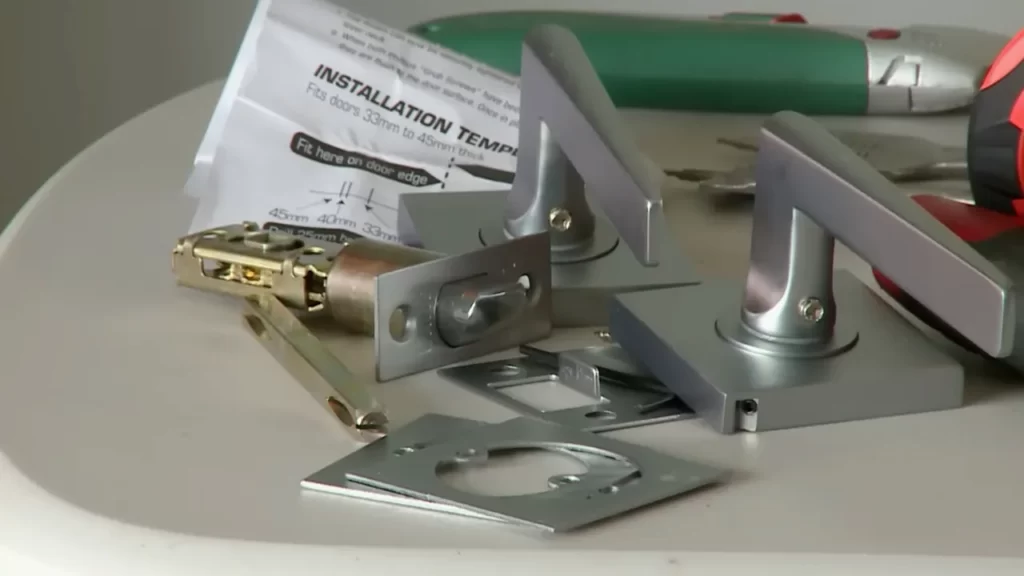
Installing a door latch is an essential step in ensuring the safety and security of your home. However, with so many different types of door latches available on the market, it can be overwhelming to choose the right one for your needs. In this practical guide, we will walk you through the factors to consider when selecting a door latch, as well as the different types of door latches and their features.
Factors to consider when selecting a door latch
When choosing a door latch, there are several important factors to consider. By taking these factors into account, you can ensure that you are selecting a latch that is not only functional but also suits your specific requirements. Here are a few key factors to keep in mind:
- The level of security required: Different door latches offer varying levels of security. Consider the level of security you need based on the location and purpose of the door. For example, an exterior door may require a more robust and secure latch compared to an interior door.
- Compatibility: Ensure that the door latch you choose is compatible with the door and its hardware. Consider the thickness of the door, the type of handle or knob you plan to use, and any other specific requirements.
- Functionality: Think about how you intend to use the door latch. Do you need a latch that can be operated from both sides of the door, or is a one-sided latch sufficient? Consider factors such as privacy, convenience, and accessibility when making your decision.
- Aesthetics: While functionality and security are crucial, it’s also important to consider the aesthetics of the door latch. Choose a latch that complements the overall style of your door and enhances the visual appeal of your home.
Different types of door latches and their features
Now that you understand the factors to consider when selecting a door latch, let’s explore the different types of door latches available and their unique features:
| Type of Door Latch | Features |
|---|---|
| Mortice Latch | A mortice latch is a common type of latch that is installed inside the edge of the door. It provides a secure and reliable locking mechanism and can be operated with a door handle or knob. |
| Tubular Latch | Tubular latches are widely used for internal doors. They are relatively easy to install and offer a simple locking mechanism. |
| Deadbolt Latch | Deadbolt latches are known for their high level of security. They provide a solid and durable locking mechanism and are commonly used for exterior doors. |
| Rim Latch | Rim latches are surface-mounted latches that are often used on traditional or historical doors. They provide a classic and stylish look. |
These are just a few examples of the different types of door latches available. Consider the unique features and benefits of each type when making your decision.
By carefully considering the factors listed above and understanding the different types of door latches and their features, you can confidently select the right door latch for your needs. Remember, the right door latch not only provides security but also adds to the overall functionality and aesthetic appeal of your door.
Step 1: Gather The Necessary Tools And Materials
Before you begin installing a door latch, it’s important to gather all the essential tools and materials you’ll need for the job. This will ensure a smooth and efficient installation process. Here are the key things you should have:
Essential tools for installing a door latch
- A drill – ideally, a cordless drill with a variety of drill bits.
- A screwdriver set – including both flathead and Phillips-head screwdrivers.
- A tape measure – for accurate measurements of the latch and strike plate placement.
- A chisel – to create a mortise for the latch and strike plate.
- A hammer – for tapping in screws and making adjustments.
- A pencil – for marking the location of the latch and strike plate.
- A door knob – if you’re installing a latch as part of a larger door hardware upgrade.
- Safety glasses – to protect your eyes from any flying debris.
Types of door latches and their corresponding installation requirements
There are different types of door latches available, and each requires specific installation techniques. Here are a few common types:
| Latch Type | Installation Requirements |
|---|---|
| Deadbolt latch | Requires drilling a large hole for installation. |
| Privacy latch | Needs a smaller hole and typically comes with a turn-thumb lock. |
| Passage latch | No lock mechanism and only requires a basic hole for installation. |
Additional materials and supplies needed for the installation
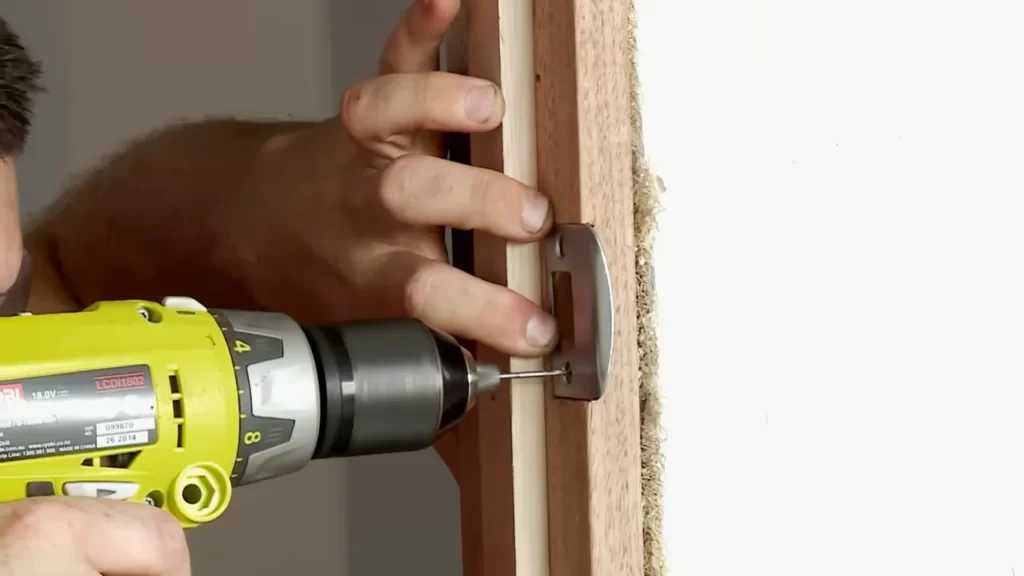
process
In addition to the essential tools mentioned above, you’ll also need some additional materials and supplies to complete the door latch installation. Here are a few:
- A door latch – make sure you choose the correct size and type for your door.
- A strike plate – this metal plate provides a secure anchoring point for the latch bolt.
- Screws – these will be used to attach the latch and strike plate to the door and door frame.
- A door template – helpful for ensuring accurate placement of the latch and strike plate.
- A door wedge – to hold the door steady while you work on the latch installation.
- Painter’s tape – useful for marking the exact location of the latch and strike plate.
By gathering all the necessary tools and materials before you begin, you’ll save time and ensure a successful installation of your door latch.
Step 2: Preparing The Door And Door Frame
Once you have chosen the perfect door latch for your needs, it’s time to move on to the next step: preparing the door and door frame. This crucial step ensures that the latch will fit properly and function smoothly. Follow these steps to prepare the door and door frame for the latch installation.
Assessing the door and door frame for compatibility with the chosen latch
First, you need to assess whether the door and door frame are compatible with the door latch you have chosen. The latch should fit snugly in the designated area without any obstructions. Take the time to carefully examine the door and door frame for any signs of damage or misalignment that may affect the latch installation. Look out for dents, cracks, or warping that could impact the latch’s performance.
Measuring and marking the correct placement for the latch
Next, it’s essential to measure and mark the correct placement for the latch on both the door and door frame. Use a measuring tape to accurately determine the appropriate position for the latch. Take into account the height from the floor and the distance from the edge of the door. Once you have measured the correct placement, use a pencil or marker to make clear markings on the door and door frame. These markings will serve as a guide during the installation process.
Preparing the door surface for installation
Before installing the latch, you need to prepare the door surface to ensure a secure and level installation. Start by cleaning the area where the latch will be installed. Remove any dust, dirt, or debris using a damp cloth. This will create a clean and smooth surface for the latch to be mounted. Additionally, if there are any existing holes or indentations that do not align with the latch’s hardware, fill them with wood filler and allow it to dry completely. This will provide a solid foundation for the latch installation.
Once the door surface is clean and level, hold the latch against the marked position and trace around its outline using a sharp pencil. This will help you visualize the precise area where the latch will be installed. Now, you are ready to move on to the next step: installing the door latch.
Step 3: Installing The Door Latch
Guided instructions for attaching the latch plate onto the
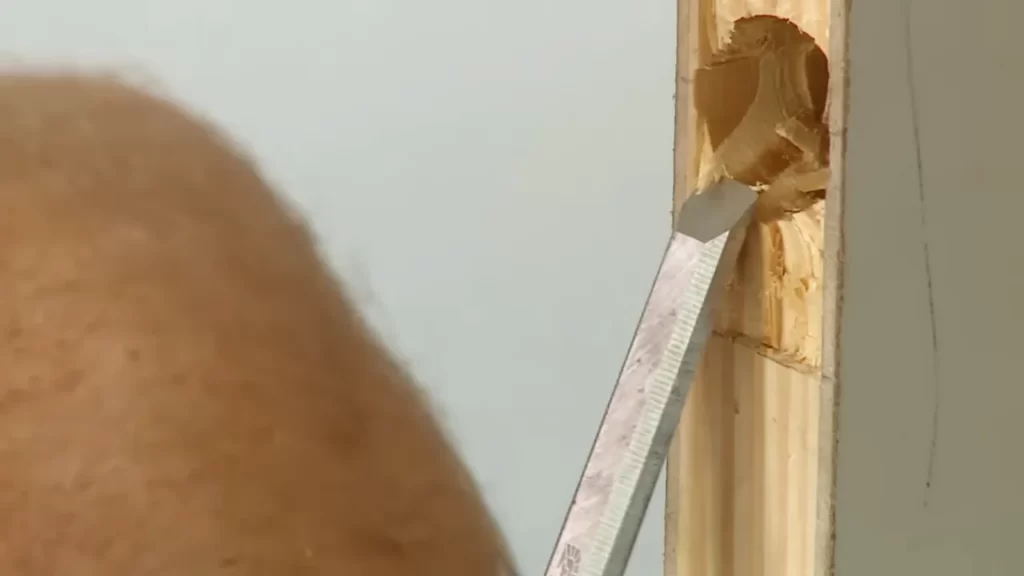
door frame
Attaching the latch plate onto the door frame is a crucial step in installing a door latch. The latch plate, also known as the strike plate, serves as the counterpart to the latch bolt, ensuring the door securely closes and latches shut. Follow these guided instructions to attach the latch plate successfully:
- Start by holding the latch plate against the door frame, ensuring it aligns properly with the latch bolt. The plate should be positioned so that the hole for the latch bolt lines up perfectly. Use a pencil to mark the positions of the screw holes on the door frame.
- Next, using a screwdriver or a power drill, carefully remove the latch plate and set it aside. Take note of the size of screws required for installation.
- Prepare the screw holes on the door frame by drilling pilot holes to prevent splitting. Ensure the pilot holes are of the appropriate size for the screws you’ll be using.
- Now, align the latch plate with the previously marked screw hole positions on the door frame. Insert screws into the pilot holes and tighten them securely using a screwdriver or power drill. Double-check the alignment to ensure the latch plate is straight and flush against the door frame.
- Finally, test the latch plate by closing the door and engaging the latch bolt. Ensure the latch engages smoothly and securely when the door is closed. If any adjustments are needed, refer to the next heading.
Proper alignment and adjustment of the latch bolt
It’s essential to ensure proper alignment and adjustment of the latch bolt for optimal functionality of the door latch system. Follow these steps to align and adjust the latch bolt:
- Before making any adjustments, close the door and observe if the latch bolt properly aligns with the latch plate. It should easily slide into the hole on the latch plate without any resistance.
- If the latch bolt does not align correctly, adjust the position of the strike plate. Loosen the screws securing the latch plate and slightly adjust its position until the latch bolt aligns perfectly with the hole in the latch plate.
- Once you have achieved proper alignment, tighten the screws of the latch plate to secure it in place. Test the latch bolt once again to ensure smooth operation.
- If the latch bolt still does not align properly, consider using a chisel to enlarge the hole in the latch plate slightly. Be cautious and proceed slowly, as excessive enlargement can compromise the security of the latch.
Testing the latch for functionality and security
After completing the installation and adjustment of the door latch, it’s crucial to confirm its functionality and security. Follow these steps to test the latch:
- Close the door and turn the doorknob properly to ensure the latch bolt is engaged with the latch plate. The door should close smoothly and securely with a distinct clicking sound.
- Attempt to open the door by turning the doorknob from both sides. The latch bolt should retract fully, allowing the door to open without any resistance.
- Ensure that the latch bolt fully extends into the latch plate when the door is closed. There should be no noticeable gaps or misalignment between the bolt and plate.
- Test the door’s security by attempting to push or pull the door open forcefully while it is closed and latched. The latch should not give in or release, confirming its effectiveness in providing security.
By following these installation instructions and testing the latch for functionality and security, you can ensure a properly installed door latch that enhances the safety and convenience of your door. Now that the latch is successfully installed, proceed to the next steps to complete your door assembly project.
Step 4: Troubleshooting And Maintenance Tips
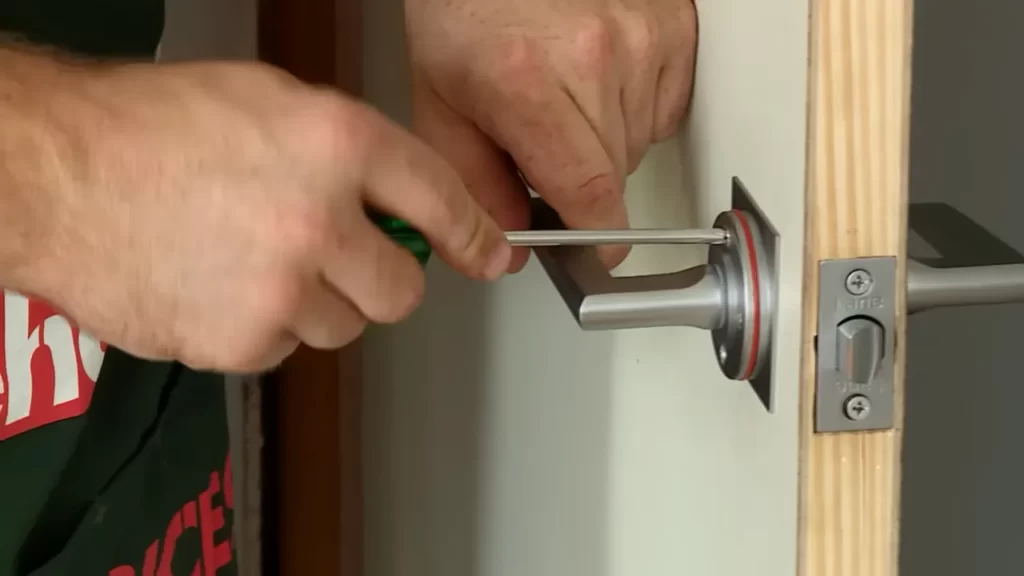
Now that you have successfully installed your door latch, it’s important to ensure its proper functionality and longevity. In this section, we will cover some common installation issues and provide solutions to help you troubleshoot any problems that may arise. We will also share some maintenance tips to keep your door latch in optimal condition.
Solutions to common installation issues
If you encounter any issues during the installation process, don’t worry! Here are some common problems and their solutions:
| Issue | Solution |
|---|---|
| The latch is not aligning correctly with the strike plate | 1. Check if the strike plate is properly aligned and tightened. Adjust it if necessary. 2. Ensure that the latch bolt is properly extended and not obstructed by any debris. Clean it if needed. 3. If the latch is still not aligning correctly, you may need to adjust the position of the strike plate or the latch itself. |
| The latch is sticking or not operating smoothly | 1. Lubricate the moving parts of the latch with a silicone-based or graphite lubricant. 2. Check for any dirt or debris that may be obstructing the latch. Clean it thoroughly. 3. If the problem persists, consider replacing the latch with a new one. |
| The latch is loose or wobbly | 1. Tighten the screws that hold the latch assembly in place. 2. If the latch is still loose, try using longer screws or adding additional reinforcement to the door frame. 3. If none of these solutions work, consult a professional for further assistance. |
Troubleshooting techniques for latch alignment and functionality problems
If you are experiencing issues with the alignment or functionality of your door latch, here are some troubleshooting techniques to help you identify and fix the problem:
- Double-check the alignment of the strike plate and adjust if necessary.
- Inspect the latch bolt for any obstructions or debris and clean it thoroughly.
- Ensure that the latch mechanism is properly lubricated for smooth operation.
- If the latch is not catching properly, consider adjusting the position of the strike plate.
- If the latch is sticking or difficult to turn, try applying lubricant to the moving parts.
- If the latch is damaged or worn out, it may need to be replaced with a new one.
Tips for maintaining the door latch’s performance and longevity
Maintaining your door latch regularly can help prolong its performance and longevity. Here are some important tips to keep in mind:
- Regularly check the latch for any signs of wear or damage and replace if necessary.
- Clean the latch and strike plate regularly by removing dirt and debris.
- Apply lubricant to the moving parts of the latch at least once a year.
- Check the screws that hold the latch assembly in place to ensure they are securely tightened.
- Keep the latch area free from excessive moisture or humidity to prevent rusting.
- If you notice any issues or changes in the latch’s performance, address them promptly to prevent further damage.
By following these troubleshooting and maintenance tips, you can ensure that your door latch operates smoothly and lasts for years to come.
Conclusion: Enjoying The Benefits Of A Secure Door
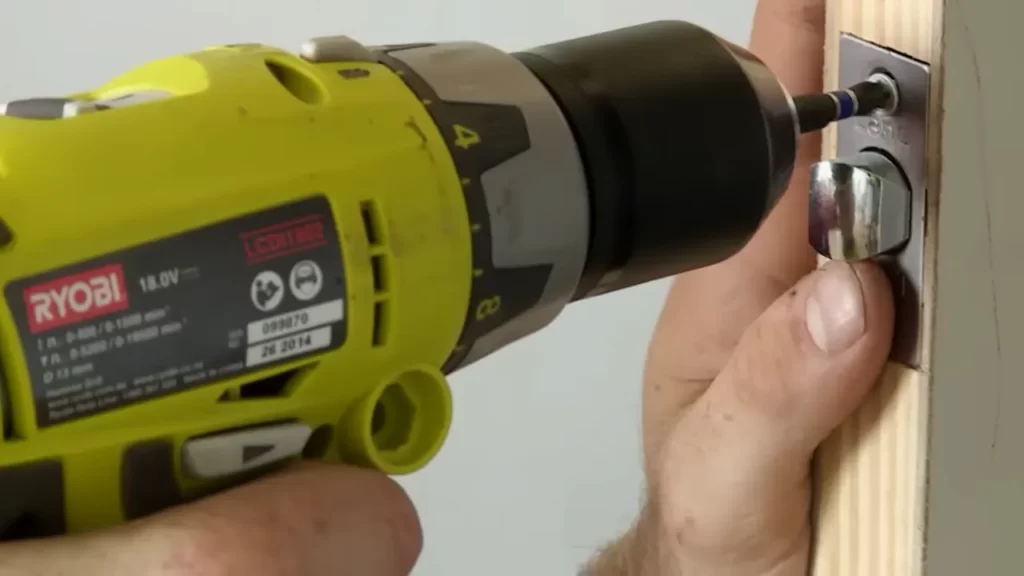
Latch
Importance of a well-installed door latch for home security
A door latch is your first line of defense against intruders and a key component of home security. When properly installed, it ensures that your door remains closed and locked, protecting you and your loved ones from potential threats. A well-installed door latch provides peace of mind, knowing that your home is secure and your family is safe.
Recap of the step-by-step guide for effortless installation
Installing a door latch may seem daunting, but with the right tools and guidance, it can be a straightforward process. Here’s a quick recap of the step-by-step guide to installing a door latch:
- Start by gathering the necessary tools: a drill, screwdriver, measuring tape, and the door latch kit.
- Measure and mark the desired location for the latch on the door frame.
- Drill a hole at the marked spot for the latch.
- Attach the latch plate to the door frame using screws.
- Install the latch mechanism on the door using the provided screws.
- Ensure the latch moves smoothly and securely into the latch plate.
- Test the latch by closing and opening the door, making sure it locks securely.
By following these steps, you can effortlessly install a door latch and enhance the security of your home.
Encouragement to take action and upgrade door latches for improved safety
Now that you have learned how to install a door latch, it’s time to take action and upgrade your existing latches for improved safety. Don’t underestimate the effectiveness of a properly installed door latch in enhancing home security.
Investing in high-quality door latches and regularly inspecting and maintaining them can make a significant difference in deterring unwanted entry attempts. Take the initiative to upgrade your door latches and give your home an extra layer of protection.
Remember, securing your home starts with the basics, and a well-installed door latch is a crucial component of a robust security system. By taking the time to install and maintain effective door latches, you can enjoy the peace of mind that comes with knowing your home and loved ones are secure.
Frequently Asked Questions Of How To Install A Door Latch
How Do You Attach A Door Latch?
To attach a door latch, follow these steps: 1. Mark the latch placement on the door edge. 2. Use a chisel to create a recess for the latch plate. 3. Attach the latch plate with screws. 4. Mark and drill holes for the strike plate on the door jamb.
5. Attach the strike plate with screws.
How Do You Replace A Door Handle Latch?
To replace a door handle latch, first remove the screws securing the old latch plate. Then, take out the old latch assembly and insert the new one, making sure it aligns with the door frame. Finally, secure the new latch plate in place with screws.
Where Should A Door Latch Be Placed?
The door latch should be placed on the side of the door frame that aligns with the door’s edge.
Which Way Is A Door Latch Supposed To Face?
A door latch should face inward, towards the interior of the room or building. This helps maintain privacy and security by preventing unauthorized access from the outside.
Conclusion
Installing a door latch can seem like a daunting task, but with the right tools and a step-by-step approach, it can be easily accomplished. By following the instructions provided in this blog post, you can ensure that your door latch is properly installed, enhancing the security and functionality of your door.
Remember to take your time, double-check measurements, and seek assistance if needed. Happy latching!
